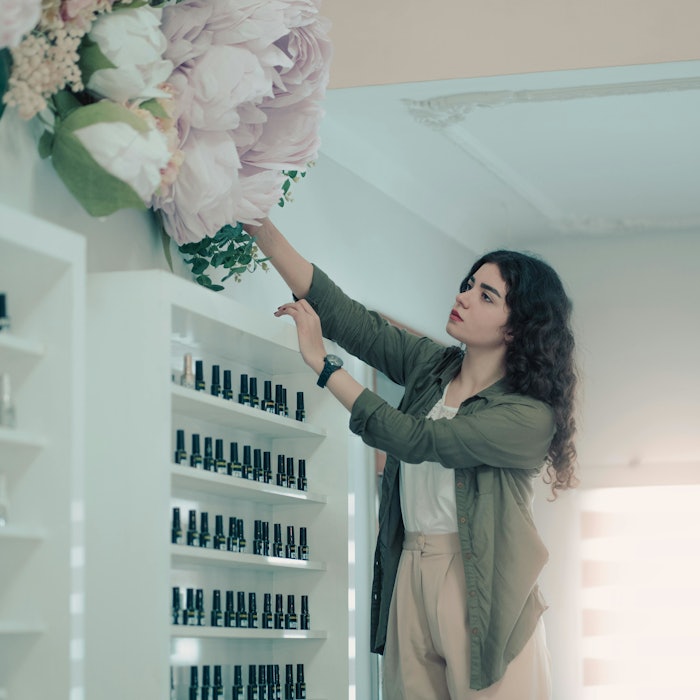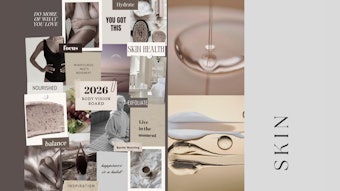
Clean beauty consumers are increasingly low-income, according to a recent Social Standards report, pointing to a rising democratization of the category. At the same time, higher-income shoppers are migrating toward clinically effective and expert-backed brands. What does this mean for the future of clean beauty?
Consumers Have an Efficacy-first Mindset
 “Efficacy appears to be of increasing concern to clean beauty consumers, who are challenging brands to not only create a product free of harmful ingredients, but one that also generates results," Social Standards notes.Angela Roma at Pexels
“Efficacy appears to be of increasing concern to clean beauty consumers, who are challenging brands to not only create a product free of harmful ingredients, but one that also generates results," Social Standards notes.Angela Roma at Pexels
As previously reported, in its 2024 wellness report, McKinsey noted that, “Roughly half of U.K. and U.S. consumers reported clinical effectiveness as a top purchasing factor, while only about 20% reported the same for natural or clean ingredients.”
At the same time, the report explains, “Consumers said they are most influenced by doctors’ recommendations when seeking care related to mindfulness, sleep and overall health,” including the selection of personal care products and vitamins.
Social Standards appears to concur, “Efficacy appears to be of increasing concern to clean beauty consumers, who are challenging brands to not only create a product free of harmful ingredients, but one that also generates results.”
The firm points out that “‘dermatology tested’ has seen an over 50% increase in share of the category on Instagram [year-over-year], which may also indicate growing attention to product efficacy.”
And, while efficacy has long been a feature of Instagram clean beauty conversations, it has now begun to spike on TikTok, particularly in the last two years, per Social Standards data.
At the same time, Social Standards found that technical, clinically positioned ingredients such as vitamins (particularly E) and retinol and retinol alternatives are taking over the clean beauty social media conversation at the expense of natural ingredients such as jojoba and palm oil.
This isn’t evidence that clean concepts are going away; instead, it points to an efficacy-first mindset among shoppers.
The Impacts of Clean Beauty’s Democratization
 Notably, mid-income consumers are most likely to join the clean beauty conversation on TikTok, while higher earners are more likely to engage with the sector on Instagram, which may in part be related to average users’ ages: 16-24 for TikTok and 25-34 for Instagram.MART PRODUCTION at Pexels
Notably, mid-income consumers are most likely to join the clean beauty conversation on TikTok, while higher earners are more likely to engage with the sector on Instagram, which may in part be related to average users’ ages: 16-24 for TikTok and 25-34 for Instagram.MART PRODUCTION at Pexels
Notably, mid-income consumers are most likely to join the clean beauty conversation on TikTok, while higher earners are more likely to engage with the sector on Instagram, which may in part be related to average users’ ages: 16-24 for TikTok and 25-34 for Instagram.
That said, Social Standards’ report claims that the typical clean beauty shopper is age 30 or older, white and female-identifying.
Across both platforms, however, participation of higher-income shoppers is diminishing.
This may be good news for clean beauty brands, which have typically operated under the perception that the category is solely for wealthier consumers.
Conversational keywords point to this shift. Per Social Standards, terms like “pricing” are increasingly common in Instagram clean beauty conversations. On TikTok, terms like “discount” and “affordable” are popping up in clean beauty chatter.
What’s Next for Clean Beauty?
Looking ahead, brands that wish to succeed in the clean beauty space with high-, mid- and low-income shoppers will need to:
• Deliver clear efficacy
• Adopt clinically effective actives
• Price for mid- and low-income shoppers
Click here for access to the full report and methodology.










